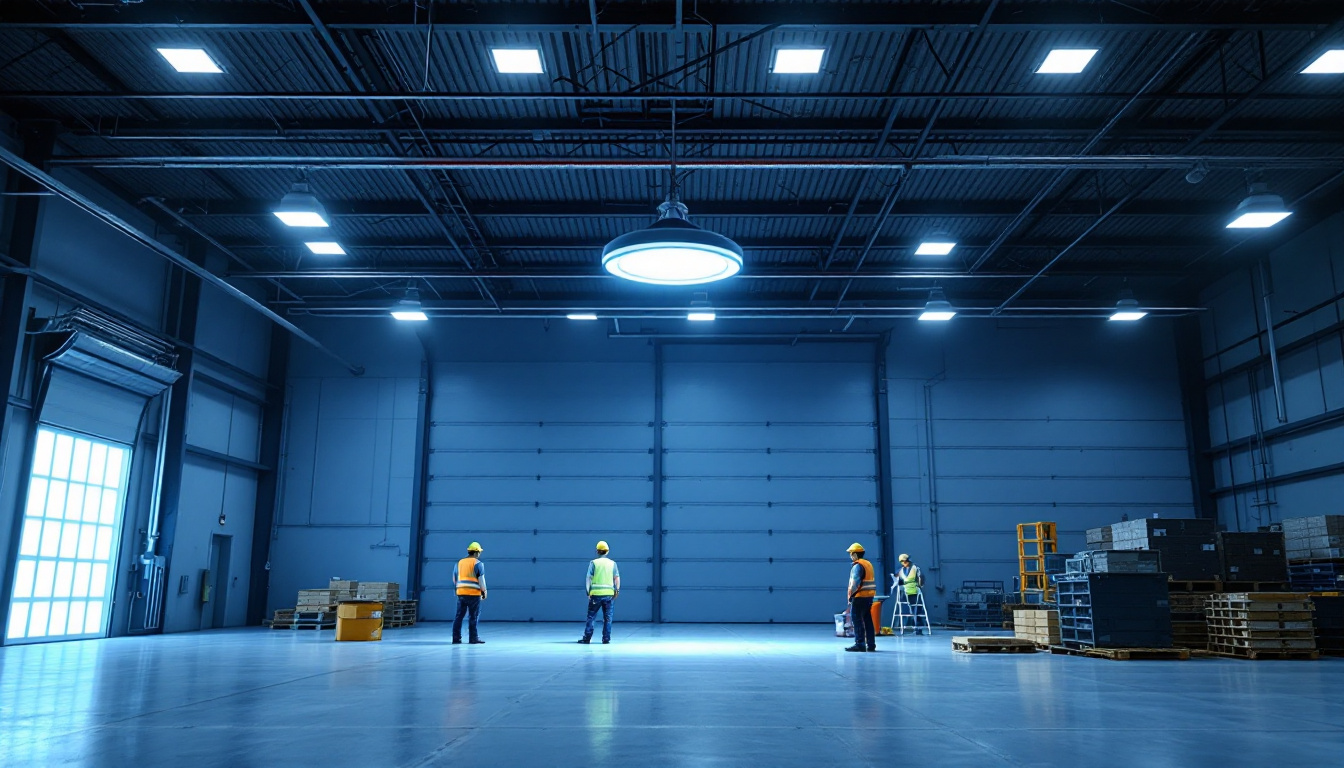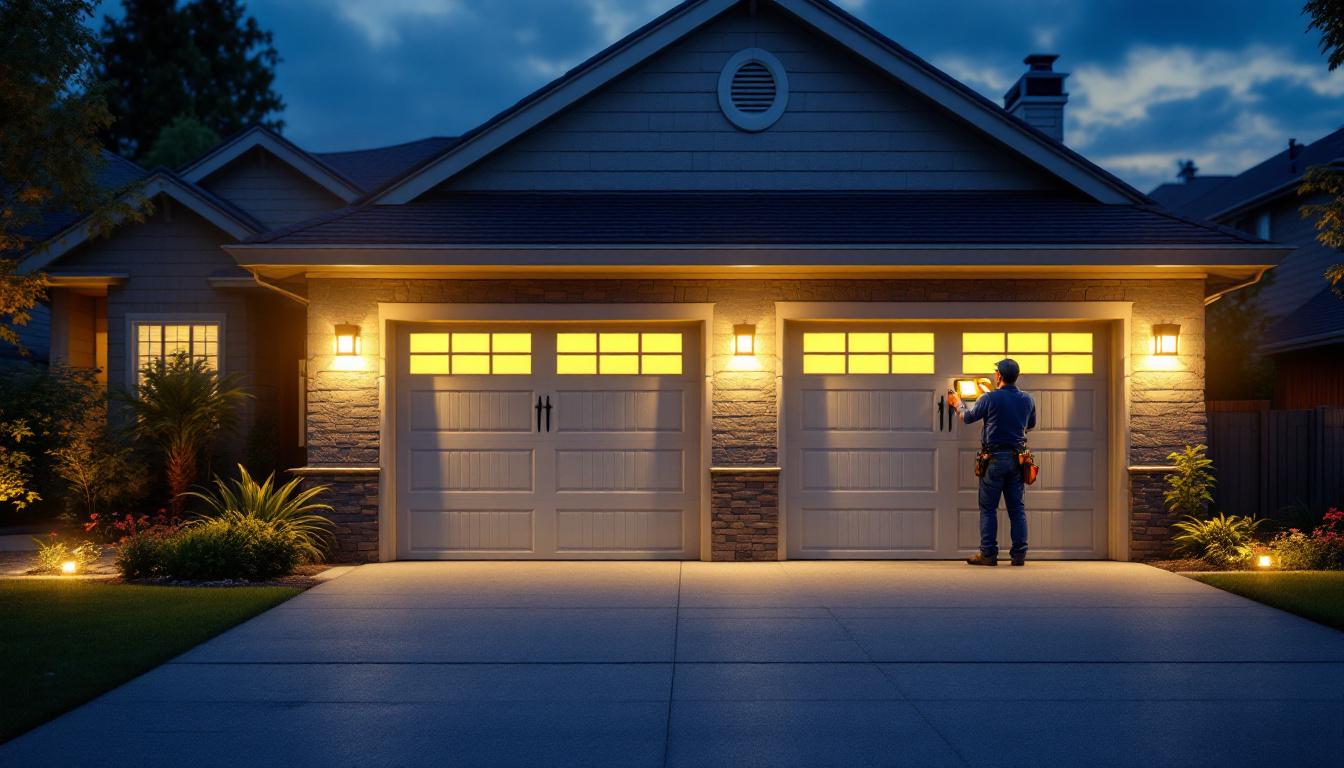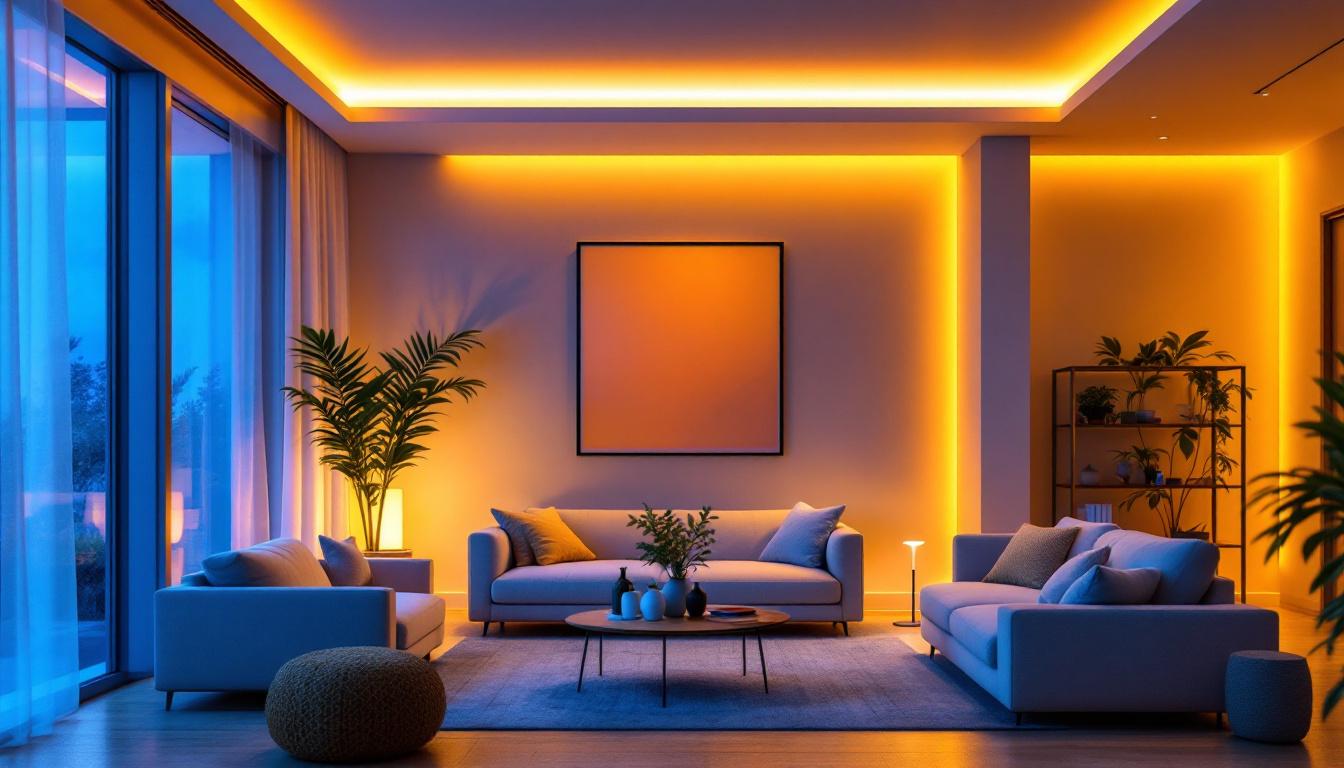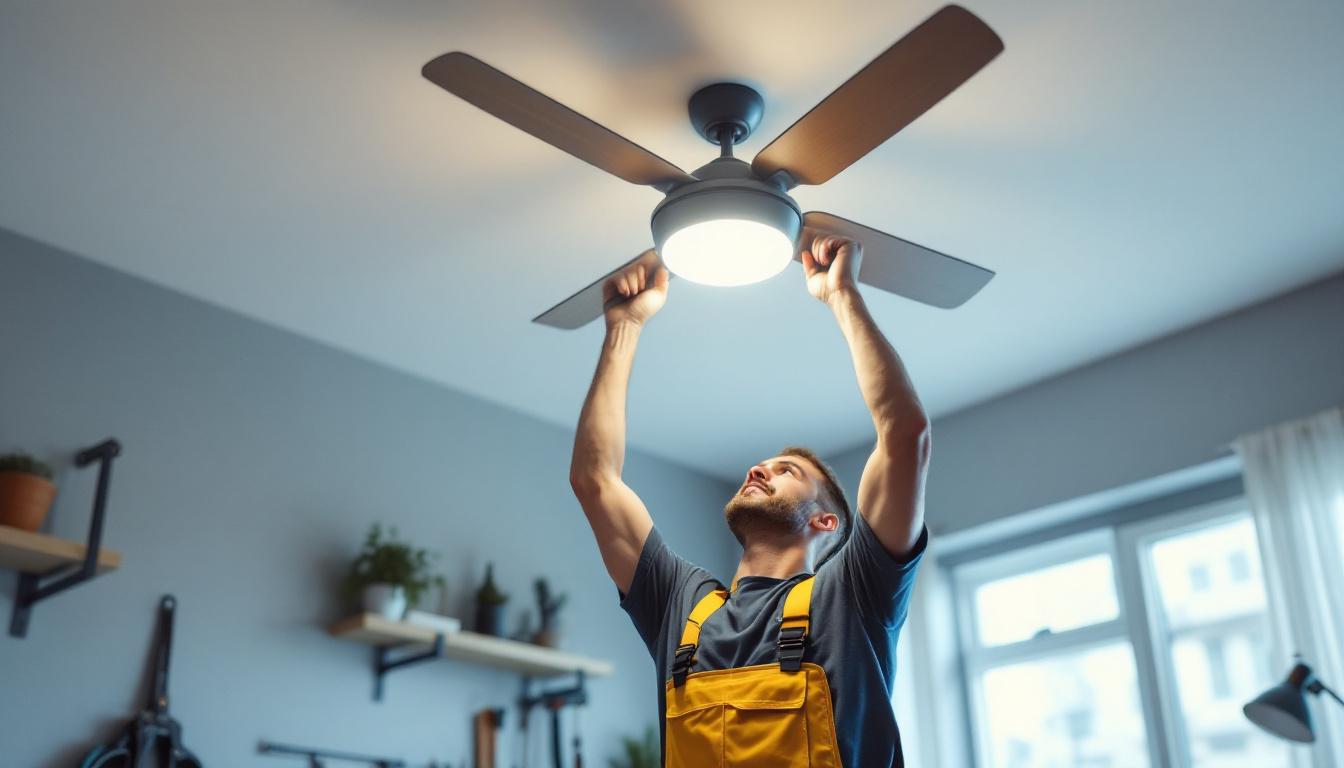
As the demand for energy-efficient lighting solutions continues to rise, LED high bay lights have emerged as a popular choice for industrial and commercial applications. Among these, the UFO-style LED high bay lights are particularly favored for their unique design and superior performance. This article aims to provide lighting contractors with best practices for selecting, installing, and maintaining LED high bay lights, ensuring optimal results for clients.
LED high bay lights are designed for spaces with high ceilings, typically ranging from 15 to 40 feet. Their primary function is to provide bright, uniform lighting for large areas such as warehouses, gymnasiums, and manufacturing facilities. The UFO design, characterized by its round shape and compact size, allows for efficient heat dissipation and a sleek aesthetic. This design not only enhances the visual appeal of the lighting fixture but also contributes to its performance, as effective heat management is crucial for maintaining the longevity and efficiency of LED technology.
One of the most significant advantages of LED high bay lights is their energy efficiency. Compared to traditional lighting options like metal halide or fluorescent lights, LEDs consume significantly less power while providing the same, if not better, illumination levels. This efficiency translates into lower energy bills for clients and a reduced carbon footprint. In fact, many businesses have reported energy savings of up to 75% after switching to LED lighting, making it not just an environmentally friendly choice but also a financially savvy one.
Additionally, LED lights have a much longer lifespan, often exceeding 50,000 hours. This longevity means less frequent replacements and maintenance, making them a cost-effective solution in the long run. Moreover, LEDs are known for their instant-on capabilities and minimal warm-up time, ensuring that spaces are illuminated promptly. This feature is particularly advantageous in environments that require immediate lighting, such as emergency response areas or facilities operating on tight schedules. The durability of LED lights also means they are less prone to breakage, further enhancing their appeal for industrial applications.
UFO LED high bay lights are versatile and can be used in various settings. Common applications include warehouses, distribution centers, manufacturing plants, retail spaces, and even recreational facilities. Their ability to provide high lumen output makes them ideal for areas requiring bright, consistent lighting. In addition, these lights can be equipped with smart technology, allowing for features such as dimming, motion sensing, and remote control, which further enhance their functionality and adaptability to different environments.
Moreover, the design of UFO lights allows for a wide beam angle, ensuring that light is distributed evenly across large spaces. This feature is particularly beneficial in environments where visibility is crucial for safety and productivity. For instance, in a warehouse setting, proper lighting can significantly reduce the risk of accidents and improve the efficiency of operations. Furthermore, the ability to customize the color temperature of LED high bay lights means that businesses can create the ideal ambiance for their specific needs, whether it’s a bright white light for a manufacturing floor or a warmer tone for a retail environment, enhancing both functionality and customer experience.
Choosing the right LED high bay lights involves several considerations to ensure that the selected fixtures meet the specific needs of the application. Lighting contractors must take into account factors such as lumen output, color temperature, and mounting height.
The first step in selecting LED high bay lights is to calculate the lumen requirements for the space. This calculation is based on the size of the area, the height of the ceilings, and the intended use of the space. For instance, a warehouse may require higher lumen output compared to a retail store.
Using a lighting design software or calculator can help contractors determine the optimal lumens needed. It is essential to strike a balance between sufficient brightness and energy efficiency, as over-lighting can lead to unnecessary energy consumption. Additionally, considering the reflectivity of surfaces within the space can also influence lumen requirements; for example, lighter surfaces can reflect more light, potentially reducing the total lumen output needed.
Color temperature, measured in Kelvin (K), plays a crucial role in the ambiance and functionality of a space. For industrial applications, a cooler color temperature (5000K to 6500K) is often preferred, as it mimics daylight and enhances visibility. Conversely, warmer temperatures (3000K to 4000K) may be more suitable for retail environments, creating a welcoming atmosphere.
Contractors should consider the nature of the work being performed in the space when selecting color temperature. For example, areas requiring precision work may benefit from cooler temperatures, while spaces focused on customer interaction might prefer warmer hues. Furthermore, it’s advisable to think about how color temperature can affect employee productivity and mood; studies have shown that appropriate lighting can significantly influence overall workplace satisfaction and efficiency.
The mounting height of LED high bay lights significantly impacts their performance. Generally, the higher the fixture is mounted, the wider the beam angle should be to ensure adequate light coverage. Conversely, lower mounting heights may require fixtures with a narrower beam angle to achieve the desired illumination levels.
Contractors should assess the layout of the space and consider any obstacles that may obstruct light distribution. Properly positioning the fixtures can enhance overall lighting effectiveness and minimize shadows, creating a safer and more productive environment. Additionally, the use of adjustable mounting brackets can provide flexibility in directing light where it’s most needed, allowing for future adjustments as the layout of the space evolves or as the needs of the operation change. This adaptability can be particularly beneficial in dynamic environments such as manufacturing facilities or multi-purpose warehouses.
Once the appropriate LED high bay lights have been selected, the next step is installation. Proper installation is critical to maximizing the performance and longevity of the fixtures. Lighting contractors should adhere to the following best practices during the installation process.
Before installation begins, it is essential to prepare the site adequately. This preparation includes ensuring that the mounting surfaces are clean and free of debris, as well as verifying that all electrical connections meet local codes and regulations. Proper safety measures should also be taken to protect workers during the installation process.
Contractors should conduct a thorough inspection of the existing electrical infrastructure to ensure compatibility with the new LED fixtures. If necessary, upgrades or modifications may be required to accommodate the new lighting system.
Using the appropriate tools and equipment is vital for a successful installation. Contractors should have access to ladders or lifts that can safely reach the mounting height, as well as tools for securing the fixtures and making electrical connections. Additionally, having a multimeter on hand can help verify electrical connections and ensure proper voltage levels.
It is also advisable to have a lighting design plan on hand during installation. This plan will guide the positioning of fixtures and ensure that the intended lighting layout is achieved. Proper planning can save time and reduce the likelihood of errors during installation.
After installation, it is crucial to test the lighting system to ensure that it operates as intended. This testing should include verifying that all fixtures are functioning correctly and that the light levels meet the calculated requirements. Adjustments may be necessary to achieve optimal performance.
Commissioning the lighting system involves fine-tuning settings, such as dimming options or integrated controls, to enhance energy efficiency and user experience. Providing clients with a demonstration of the system can also help them understand its features and benefits.
While LED high bay lights are known for their longevity and low maintenance requirements, regular upkeep is still essential to ensure optimal performance over time. Lighting contractors should educate clients on the importance of maintenance and provide guidance on best practices.
Dust and debris can accumulate on LED fixtures, reducing their efficiency and light output. Regular cleaning of the fixtures is necessary to maintain optimal performance. Contractors should recommend a cleaning schedule based on the environment, as industrial settings may require more frequent cleaning compared to commercial spaces.
In addition to cleaning, periodic inspections should be conducted to identify any potential issues, such as loose connections or damaged fixtures. Early detection of problems can prevent costly repairs and ensure that the lighting system remains functional.
Many modern LED high bay lights come equipped with advanced controls, such as motion sensors or dimming capabilities. Contractors should advise clients on the benefits of utilizing these features to enhance energy efficiency and adapt to changing lighting needs.
Regularly updating control systems can also improve the overall performance of the lighting system. As technology evolves, new features may become available that can further enhance the user experience and energy savings.
LED high bay lights, particularly those with a UFO design, offer a range of benefits for industrial and commercial applications. By understanding the key factors in selecting, installing, and maintaining these fixtures, lighting contractors can provide clients with effective and energy-efficient lighting solutions.
Implementing best practices throughout the entire process—from selection to installation and maintenance—ensures that clients receive the highest quality service and results. As the industry continues to evolve, staying informed about the latest advancements in LED technology will further enhance the capabilities of lighting contractors, allowing them to meet the diverse needs of their clients.
Ready to elevate your lighting game? Look no further than LumenWholesale for all your LED high bay light needs. We specialize in providing contractors with the highest quality, spec-grade lighting products at unbeatable wholesale prices. Say goodbye to inflated markups and hello to superior lighting solutions that fit your budget. With our extensive selection, free shipping on bulk orders, and commitment to excellence, you can trust that your projects will shine bright. Don’t compromise on quality or value—Wholesale Lighting at the Best Value is just a click away. Choose LumenWholesale and experience the difference today!

Discover why LED garage outdoor lights are a game-changer for lighting contractors.

Discover the transformative power of LED replacements for fluorescent light bulbs in enhancing lighting designs.

Discover the ultimate resources lighting contractors rely on to master ceiling fan controls.

Discover essential insights into solar strip lights for outdoor use with our comprehensive guide tailored for lighting contractors.